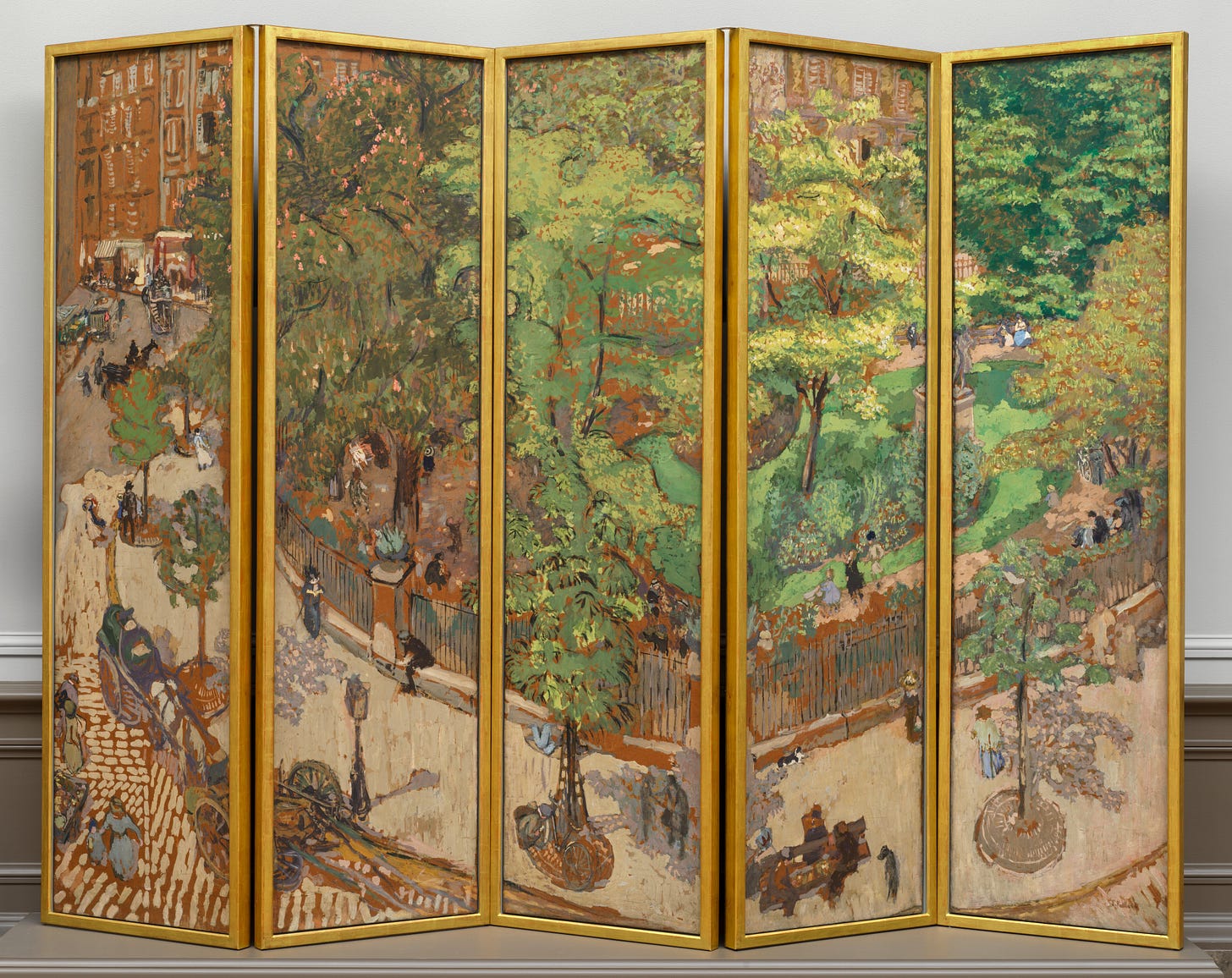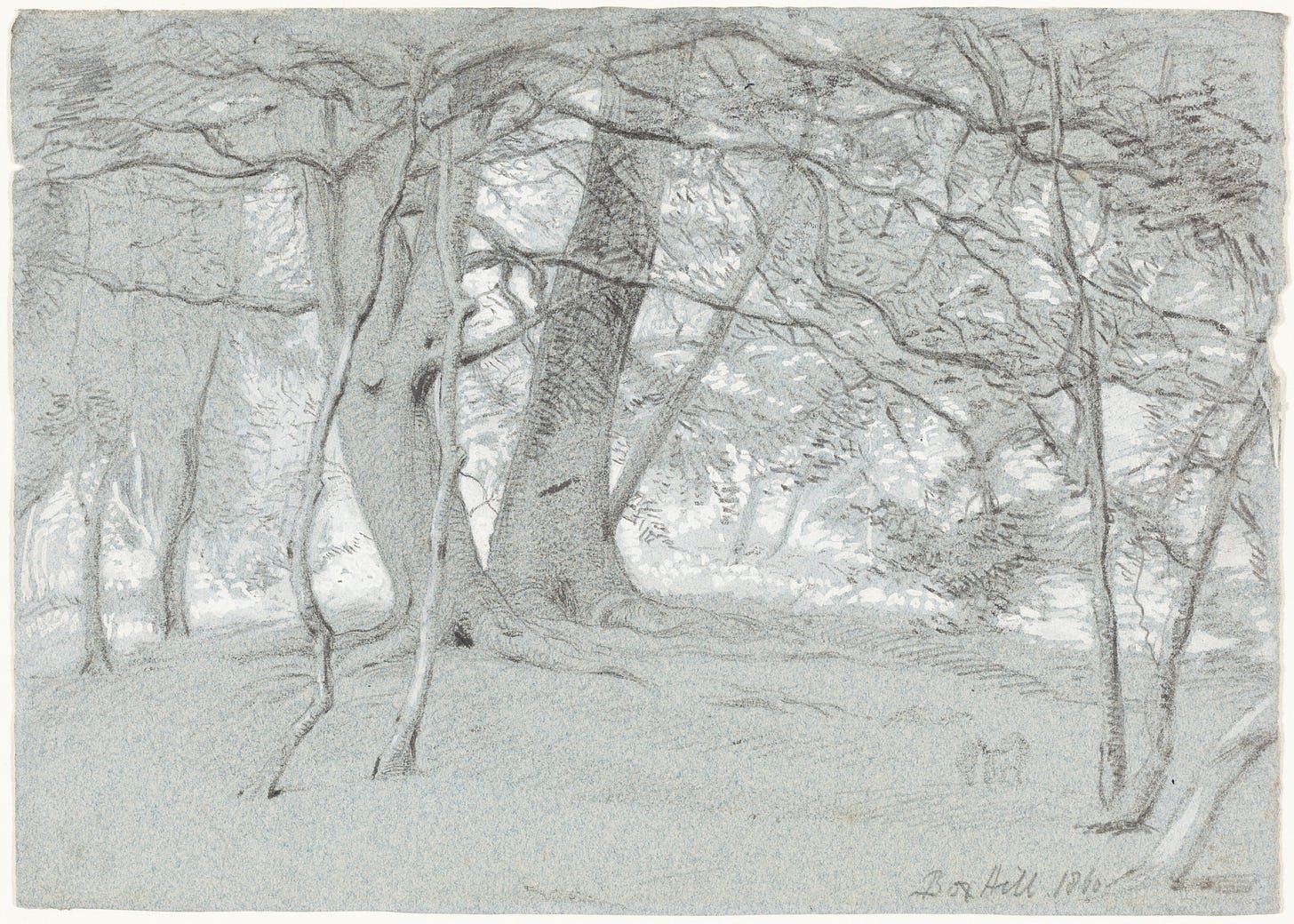There they are, with all the upright dignity of the ambassador who cannot leave his own party: mighty plane trees, noble giants, purveyors of cool, shade and colour; emblematic oxygenators that line London’s arteries like so much green cholesterol.
The platanus x hispanica is London’s most common tree. It is, deliciously for this world capital, a hybrid of the platanus occidentalis (the American sycamore) and the platanus orientalis (Oriental plane). If I didn’t get it across in the first paragraph, they are 70ft tall arboreal metaphors.
Observe just their bark: a mottled canvas of olive, cream, and russet. It peels away in irregular patches, revealing tender flesh. This exfoliation—"decorticating"—serves a purpose both practical and poetic: the tree literally sheds its skin to breathe in London’s strangling air but, poetically, humanly, sloughs off itself the accumulated grime of daily existence.
The wikipedia article describes the leaves of the London plane as “thick and stiff-textured, broad, palmately lobed, superficially maple-like.” What a handsome phrase. Aren’t we lucky to have them as silent witnesses to our fifteen million human dramas: the hurried kiss beneath their canopy, the homeless man’s temporary shelter, the child's first attempt to climb something taller than furniture? They are masters in the metropolitan art of simultaneous invisibility and conspicuousness. And they are one of the most efficient trees in removing small particulate pollutants in urban areas. That’s good of them too.
Thus do we forgive them their vigorous pavement-buster roots. Thus do we forgive them their sticky sap and eye-itching hair-spores.
I love London plane trees.





